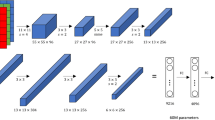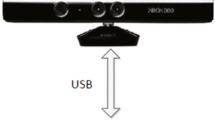Abstract
Self-e-learning platform of gesture recognition system (GRS) is failed to retrain maximum accuracy of gesture recognition via targeted special people observation. This occurs when there is a constant flow of action come gestures and similarity index gestures in the words. Some of the letters in Indian Sign Language (ISL) have similarity index gestures (like e, f, m, and n), while others use action come gestures (say h, j, y). Many new and updated gestures for the English alphabet have been introduced ISL recently, including the similarity index gesture and the action come gesture. In spite of this, GRS is unable to adjust to the continuous changes that occurred over the poses of gestures. Global Gestures Synchronous is required for better classification of similarity index gesture and action come gesture in special people e-learning education platform. In this work, we propose a hybrid pretrained 3D convolutional neural network (HP 3D-CNN) framework to distinguish between similarity index gestures and action come gestures with the help of a gradient-based machine learning (GML) classifier. This research investigates a Probability of Concurrent Gestures (PPCG) model for estimating the likelihood that two gestures will occur simultaneously based on their similarity index and the direction of action. We break down the difficult joint prediction problem into simpler marginal sub-prediction problems. Our GML model efficiently classifies both similarity index gesture and action come gesture in the joint prediction space in which the marginal prediction model and the conditional prediction model are processed. The results show that the proposed model successfully combines the characteristics of the interacting agents to increase the likelihood of making accurate predictions of their joint action. The acquired positive feature characteristic is then used to categorise gestures in an HP 3D-CNN framework. Finally, we use the industry standard ISL benchmark database to assess the performance of our proposed GML classifier. We have shown that our HP 3D-CNN framework outperforms existing state-of-the-art methods on a variety of metrics, including Accuracy, F-measure, Recall, Precision, Dice, and Jaccard indexes.








Similar content being viewed by others
Availability of data and materials
Not applicable.
References
Agrawal M, Ainapure R, Agrawal S, Bhosale S, Desai S (2020) Models for hand gesture recognition using deep learning. In: 2020 IEEE 5th international conference on computing communication and automation (ICCCA). https://doi.org/10.1109/iccca49541.2020.92508
Al Rakib MA, Rahman MM, AlamAnik MS, Jahangir Masud FA, Rahman MA, Islam S, Abbas FI (2022) Arduino Uno based voice conversion system for dumb people. Eur J Eng Technol Res 7(2):118–123
Anupama HS, Usha BA, Madhushankar S, Vivek V, Kulkarni Y (2021) Automated sign language interpreter using data gloves. In: 2021 international conference on artificial intelligence and smart systems (ICAIS), pp 472–476
Bhat K, Chayalakshmi CL (2020) Advanced glove for deaf and dumb with speech and text message on android cell phone. In: 2020 IEEE international conference for innovation in technology (INOCON), pp 1–7
Das P, Ahmed T, Ali MF (2020) Static hand gesture recognition for American sign language using deep convolutional neural network. In: 2020 IEEE region 10 symposium (TENSYMP). https://doi.org/10.1109/tensymp50017.2020.923
Elsayed RA, Sayed MS, Abdalla MI (2017) Hand gesture recognition based on dimensionality reduction of histogram of oriented gradients. In: 2017 Japan–Africa conference on electronics, communications and computers (JAC-ECC), pp 119–122
Ettinger S et al (2021) Large scale interactive motion forecasting for autonomous driving: the waymo open motion dataset. IEEE/CVF Int Confer Comput vis (ICCV) 2021:9690–9699. https://doi.org/10.1109/ICCV48922.2021.00957
Fora M, Atitallah BB, Lweesy K, Kanoun O (2021) Hand gesture recognition based on force myography measurements using KNN classifier. In: 2021 18th international multi-conference on systems, signals & devices (SSD), pp 960–964
Galka J, Masior M, Zaborski M, Barczewska K (2016) Inertial motion sensing glove for sign language gesture acquisition and recognition. IEEE Sens J 16:6310–6316
Gangadia D, Chamaria V, Doshi V, Gandhi J (2020) Indian sign language interpretation and sentence formation. In: 2020 IEEE Pune section international conference (PuneCon), pp 71–76
Gao Z, Wang P, Wang H, Xu M, Li W (2020) A review of dynamic maps for 3D human motion recognition using ConvNets and its improvement. Neural Process Lett 52(2):1–15
Mehra V, Choudhury A, Choubey RR (2019) Gesture to speech conversion using flex sensors, MPU6050 and python. Int J Eng Adv Technol 8(6):1–5
Mo X, Huang Z, Xing Y, Lv C (2022) Multi-agent trajectory prediction with heterogeneous edge-enhanced graph attention network. IEEE Trans Intell Transp Syst 23(7):9554–9567. https://doi.org/10.1109/TITS.2022.3146300
Ngiam J, Caine B, Vasudevan V, Zhang Z, Chiang HL, Ling J, Roelofs R, Bewley A, Liu C, Venugopal A, Weiss DJ, Sapp B, Chen Z, Shlens J (2021) Scene transformer: a unified architecture for predicting multiple agent trajectories. arXiv:2106.08417
Poornima N, Yaji A, Achuth M, Dsilva AM, Chethana SR (2021) Review on text and speech conversion techniques based on hand gesture. In: 2021 5th international conference on intelligent computing and control systems (ICICCS), pp 1682–1689
Raval JJ, Gajjar R (2021) Real-time sign language recognition using computer vision. In: 2021 3rd international conference on signal processing and communication (ICPSC). https://doi.org/10.1109/icspc51351.2021.94517
Shi Z, Zhang JA, Xu R, Fang G (2018) Human activity recognition using deep learning networks with enhanced channel state information. In: 2018 IEEE globecom workshops (GC wkshps). https://doi.org/10.1109/glocomw.2018.8644435
Sonawane P, Shah K, Patel P, Shah S, Shah J (2021) Speech to indian sign language (ISL) translation system. In: 2021 international conference on computing, communication, and intelligent systems (ICCCIS), pp 92–96
Wang Z, Hou Y, Jiang K, Dou W, Zhang C, Huang Z, Guo Y (2019) Hand gesture recognition based on active ultrasonic sensing of smartphone: a survey. IEEE Access 7:111897–111922
Wu D, Wu Y (2021) AIR2 for Interaction Prediction. arXiv preprint arXiv:2111.08184
Wu Y, Chen K, Fu C (2016) Natural gesture modeling and recognition approach based on joint movements and arm orientations. IEEE Sens J 16:7753–7761
Zanzarukiya A, Jethwa B, Panchasara M, Parekh R (2020) Assistive hand gesture glove for hearing and speech impaired. In: 2020 4th international conference on trends in electronics and informatics (ICOEI), p 48184. https://doi.org/10.1109/icoei48184.2020.91430
Zhao K, Zhang K, Zhai Y, Wang D, Su J (2020) Real-time sign language recognition based on video stream. In: 2020 39th Chinese control conference (CCC), pp 7469–7474
Zhou S, Fei F, Zhang G, Mai JD, Liu Y, Liou JY, Li WJ (2014) 2D human gesture tracking and recognition by the fusion of MEMS inertial and vision sensors. IEEE Sens J 14:1160–1170
Funding
No funding was received to assist with the preparation of this manuscript.
Author information
Authors and Affiliations
Contributions
All authors are contributed equally.
Corresponding author
Ethics declarations
Conflict of interest
Not applicable.
Ethical approval
The authors declare that they have no conflict of interest.
Additional information
Publisher's Note
Springer Nature remains neutral with regard to jurisdictional claims in published maps and institutional affiliations.
Rights and permissions
Springer Nature or its licensor (e.g. a society or other partner) holds exclusive rights to this article under a publishing agreement with the author(s) or other rightsholder(s); author self-archiving of the accepted manuscript version of this article is solely governed by the terms of such publishing agreement and applicable law.
About this article
Cite this article
Kumar, G.M., Pandian, A. Gesture similarity index reduction using GML classifier in hybrid pretrained 3D-CNN framework. Soft Comput 27, 1583–1597 (2023). https://doi.org/10.1007/s00500-023-07814-9
Accepted:
Published:
Issue Date:
DOI: https://doi.org/10.1007/s00500-023-07814-9




